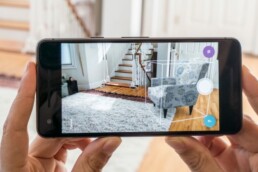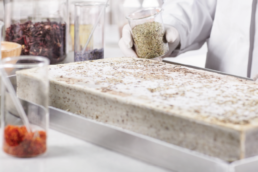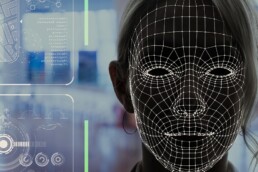How did South Korea use technology to battle Covid? Before discussing the technology used to fight COVID-19 in Korea, we need to discuss the South Korean healthcare system. Koreans are unafraid to go to the hospital even for a common cold. This is because getting checkups and medical treatments through the Korean healthcare system is relatively cheap. South Korea has shown that this system can coordinate a response to a public health crisis. This system works during a pandemic like the current coronavirus outbreak. The healthcare system in Korea is well funded because it is not competing with private sector insurance companies and private hospitals. Koreans pay less for their healthcare system while getting better outcomes.
This is what Americans would call a universal single-payer healthcare system. The US has shown that the private healthcare sector has difficulty responding to a public health emergency. Therefore, many strategies that have flattened the curve of coronavirus in South Korea will not work for countries like the United States.
The Early Weeks of COVID-19 in South Korea

The first case in Korea was from a person who was part of a religious group called Shincheonji, and this person ended up infecting a lot of people in the city of Daegu (Southeast of Seoul). The virus was spread at a church gathering. The person spread the virus to many people at the church, who then spread the virus across Daegu. Within weeks it was in Seoul.
The Korean government, KCDC (Korea’s version of the CDC), and the private sector worked together immediately from the start of the outbreak because they recognized the seriousness of the threat. There was no sense of false security because they saw what was happening in China.
Large Corporations in Korea Offered to Help
Large Corporations have been doing what they can to help curve the spread of COVID-19 in Korea. For example, Samsung offered its training institute and research facility as treatment centers for COVID-19 patients. This has been very helpful in reducing the need for hospital beds in Korea. The facility located in Goyang (South of Seoul) can have up to 180 beds. In addition, Samsung offered doctors and nurses from Samsung Group’s hospitals to work at these facilities on a rotational basis. This includes a $25 million emergency assistance package that Samsung donated to the National Disaster Relief Association in early 2020.
The Current State of the Covid-19 in South Korea

In 2023, there is a sense of normalcy in South Korea. Not a single city in Korea is under lockdown. Trains, cabs, and buses are running at full capacity, and food markets are all stocked with food and supplies.
South Korea has experienced virus outbreaks due to the MERS (Middle East Respiratory Syndrome) contagion that it experienced a few years ago and SARS in 2003. So in a way, South Koreans have been trained in regard to self-isolation, social distancing, and wearing masks. Therefore, during the lockdown years in 2021 and 2022, Koreans complied.
COVID-19 Vaccines in South Korea
All Korean citizens were vaccinated for free, as well as foreigners living in Korea. The Korean government signed contracts with vaccine makers so that they had enough vaccine doses for over 56 million people. Moreover, the South Korean government worked with U.S. drugmaker Moderna to build a vaccine production plant in South Korea. The South Korean government invested $200 million in the plant. Medical workers, the elderly, and those with underlying health conditions were the first to receive the vaccine.
Ways South Korea Used Technology to Fight Covid
Working with Korean Biotech Startups
 The Korean government gave regulatory room and emergency approval for private Korean biotech startups and companies to quickly develop test kits. In addition, test kits and COVID-19 masks were in production almost immediately since the first outbreak. In a few weeks, thousands of test kits were shipped across Korea daily. At its highest point, South Korea was able to produce 100,000 kits per day and test 20,000 people per day. The Korean government met with representatives from several medical startups and enterprises in Korea to quickly start making coronavirus test kits for mass production.
The Korean government gave regulatory room and emergency approval for private Korean biotech startups and companies to quickly develop test kits. In addition, test kits and COVID-19 masks were in production almost immediately since the first outbreak. In a few weeks, thousands of test kits were shipped across Korea daily. At its highest point, South Korea was able to produce 100,000 kits per day and test 20,000 people per day. The Korean government met with representatives from several medical startups and enterprises in Korea to quickly start making coronavirus test kits for mass production.
Negative Air Pressure Bio-Safety Labs
 South Korea opened over 600 testing centers that use negative air pressure for its COVID-19 screenings. These testing centers spared hospitals and clinics in Korea from being overwhelmed. The testing centers resemble a mobile home but the inside looks more like a bio-safety lab. There are booths inside that look like phone booths. People enter a booth inside the testing center where they can consult over an intercom with a doctor. The doctor or nurse will then swab the person’s nose and throat using gloves without ever contacting the patient. The key is that the booths have negative air pressure, which sucks in airborne viruses. The whole process takes less than 7 minutes. After every patient, the booths are disinfected.
South Korea opened over 600 testing centers that use negative air pressure for its COVID-19 screenings. These testing centers spared hospitals and clinics in Korea from being overwhelmed. The testing centers resemble a mobile home but the inside looks more like a bio-safety lab. There are booths inside that look like phone booths. People enter a booth inside the testing center where they can consult over an intercom with a doctor. The doctor or nurse will then swab the person’s nose and throat using gloves without ever contacting the patient. The key is that the booths have negative air pressure, which sucks in airborne viruses. The whole process takes less than 7 minutes. After every patient, the booths are disinfected.
Drive-Through Testing Centers

Drive-through testing centers allowed for fast testing without getting out of the car. South Korea had over 50 drive-through testing stations. This allowed Korean citizens to get tested without having to go to a hospital, clinic, or even a testing center. The free tests consisted of a questionnaire, a throat swab, and a temperature scan. The whole process took less than 10 minutes. The results were sent to the patient via text message.
Government Automated COVID Alert Messages
 The Korean government utilized an automated COVID alert messaging system to alert citizens about COVID-19. It doesn’t matter if you wanted the messages or not. Throughout the day, people living in Korea constantly got emergency messages with information about confirmed cases in and around their neighborhoods. So messages were different depending on where they lived. They got general messages from time to time but the vast majority of the messages were specific to their region.
The Korean government utilized an automated COVID alert messaging system to alert citizens about COVID-19. It doesn’t matter if you wanted the messages or not. Throughout the day, people living in Korea constantly got emergency messages with information about confirmed cases in and around their neighborhoods. So messages were different depending on where they lived. They got general messages from time to time but the vast majority of the messages were specific to their region.
Corona Maps

This is an app that shows where an infected patient has been. Students and engineers in Korea created the Corona Map. They wanted to provide information about people with confirmed cases and where they were. More and more engineers in Korea joined the project. The Corona Map uses data collected by the Korean government. The Korean government can track those that are infected using CCTV and GPS from both smartphones and cars. In addition, they can crack your credit card use to see where you have been.
The KCDC runs a contact tracking system that uses data from 22 credit card companies to trace the movement of individuals with COVID-19. Countries like the United States can’t do this because of privacy laws. South Koreans have mostly accepted the loss of privacy during this crisis and see it as a necessary trade-off.
Self-Quarantine App
 South Korea did not ban other countries from entering but rather used technology-enabled tracking and a mandatory 14-day quarantine. This quarantine also applied to Korean citizens coming back to Korea. All this was tracked through a self-quarantine app. All travelers returning to Korea were required to download the app. It alerted officials on whether people go out of isolation. A fine of as much as $2,500 was given to those that broke the quarantine rules. The Korean government offered supplies to those under quarantine for two weeks. The Ministry of the Interior and Safety developed the app. It uses GPS to keep track of everyone’s location.
South Korea did not ban other countries from entering but rather used technology-enabled tracking and a mandatory 14-day quarantine. This quarantine also applied to Korean citizens coming back to Korea. All this was tracked through a self-quarantine app. All travelers returning to Korea were required to download the app. It alerted officials on whether people go out of isolation. A fine of as much as $2,500 was given to those that broke the quarantine rules. The Korean government offered supplies to those under quarantine for two weeks. The Ministry of the Interior and Safety developed the app. It uses GPS to keep track of everyone’s location.
Thermal Image Cameras Using AI Technology
 Thermal Image Cameras use AI to identify people with fevers. AI cameras check people’s body temperatures and operate 24 hours a day. As people pass by the camera, it detects the temperature of the background and compares it to the person. This is a lot more effective than checking people one by one. When the camera detects abnormal temperatures it will send the information to a control center in less than a second.
Thermal Image Cameras use AI to identify people with fevers. AI cameras check people’s body temperatures and operate 24 hours a day. As people pass by the camera, it detects the temperature of the background and compares it to the person. This is a lot more effective than checking people one by one. When the camera detects abnormal temperatures it will send the information to a control center in less than a second.
Smart Bus Shelters

In the Seongdong-gu district, there is a bus shelter booth that is designed to protect riders from viruses. The district was the first to implement the Smart Bus Shelters, which have ultraviolet light air sterilizers that prevent the transmission of airborne viruses. It can break up 96-99% of virus particles. There is a thermal imaging camera that checks the rider’s body temperature. In addition, the smart bus shelter is equipped with a surveillance camera, free Wi-Fi, and phone charging ports.
Popular
Related Posts
Startups developing Conversational AI in Korea
November 15, 2022







